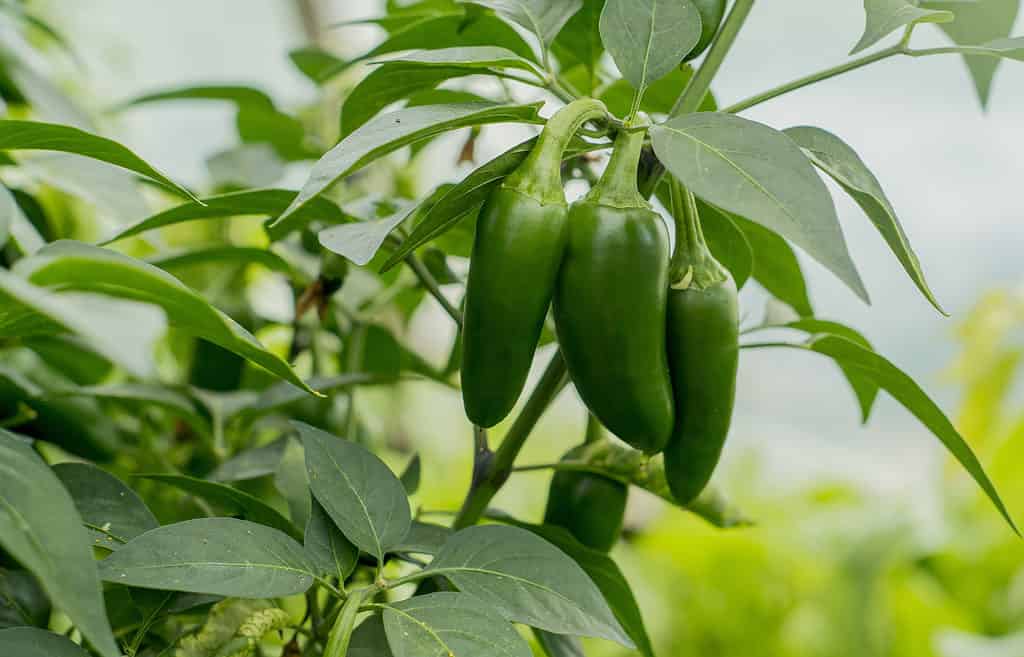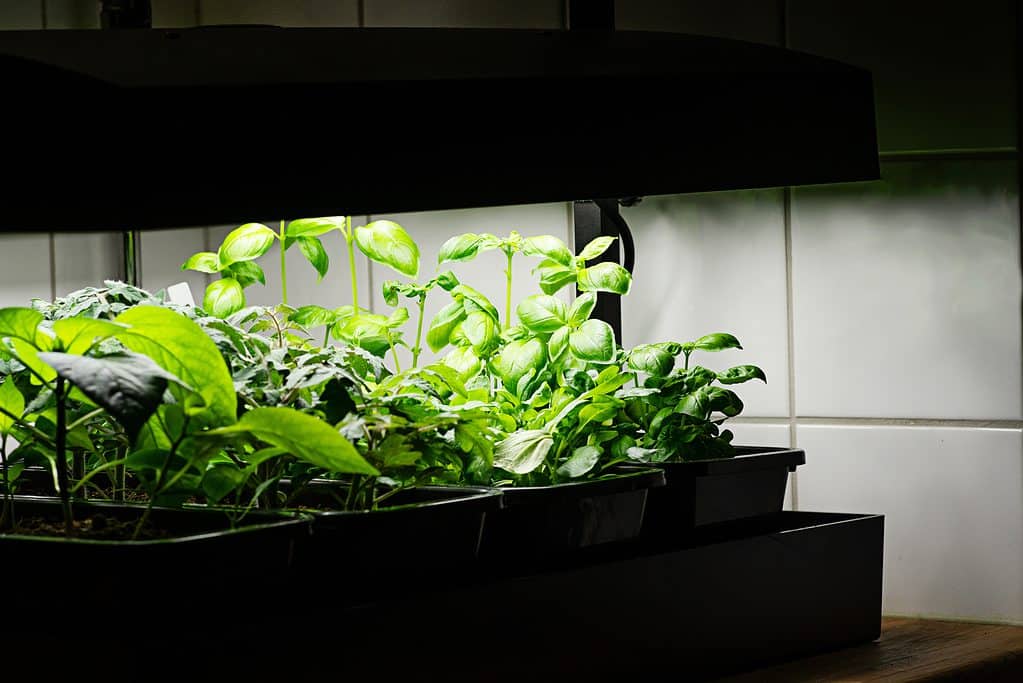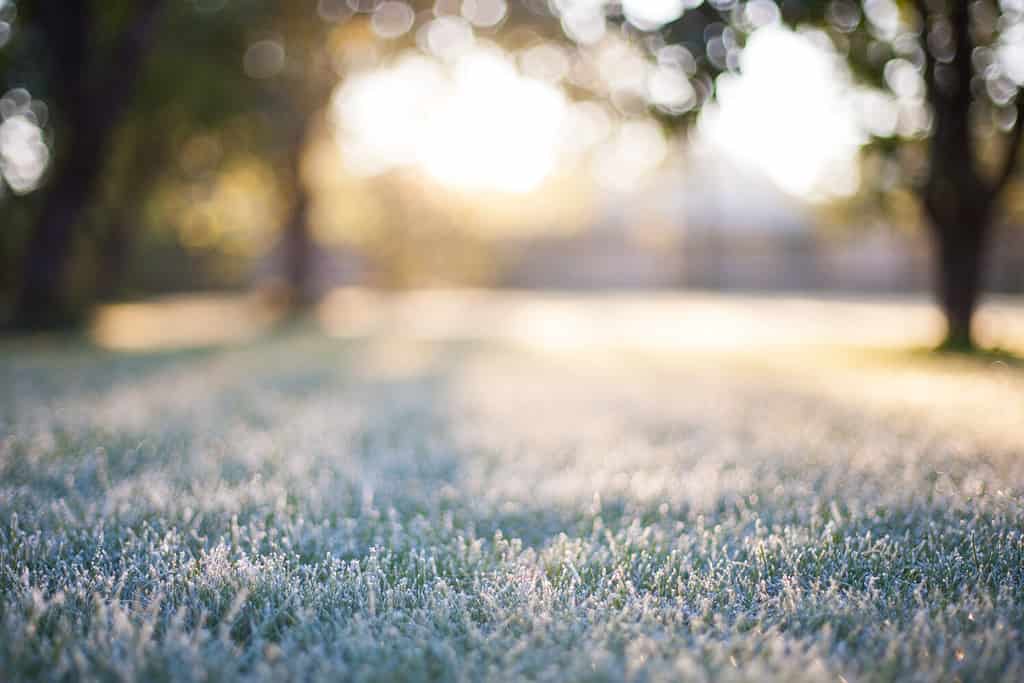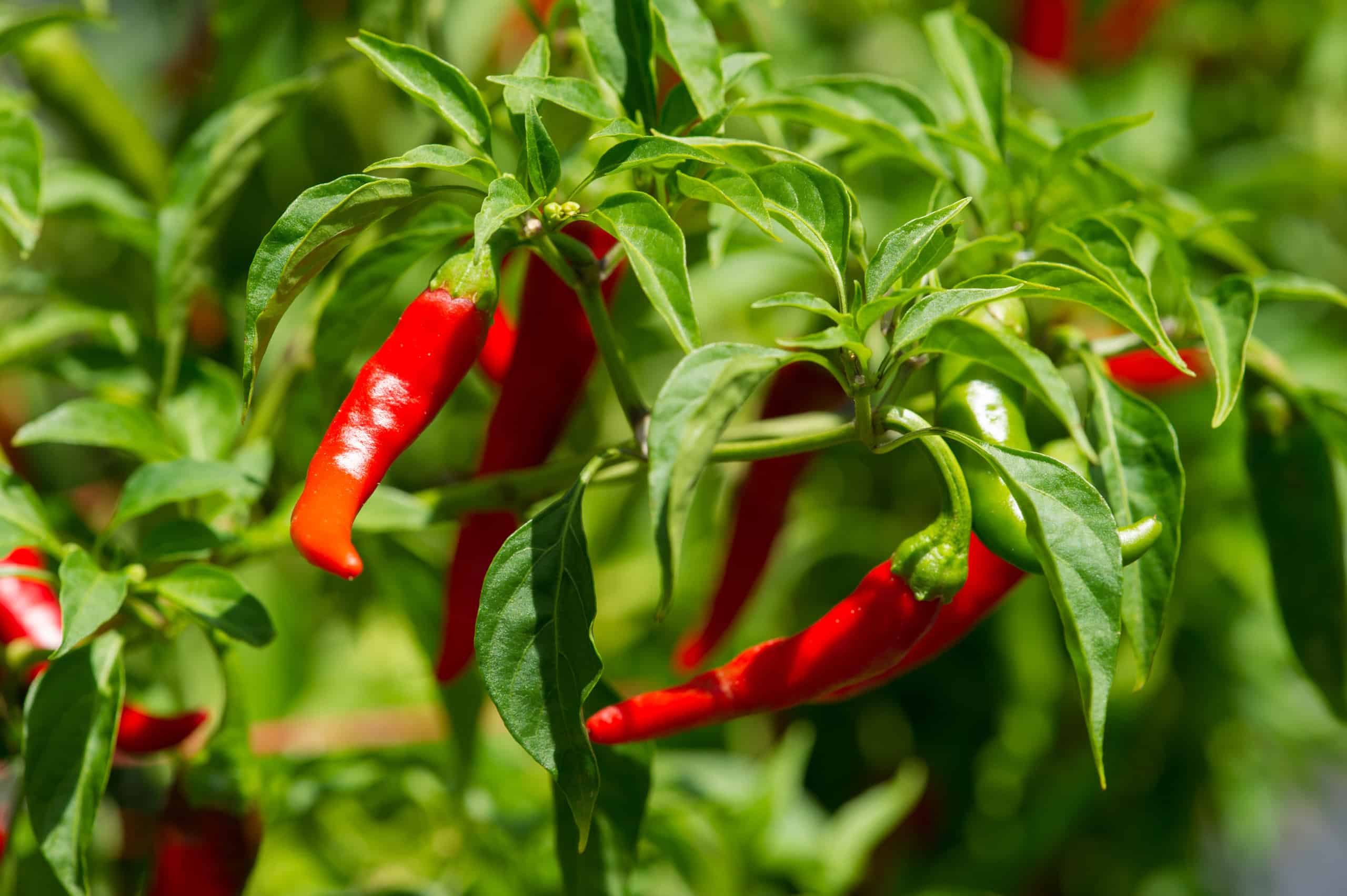Overwintering allows you to keep your favorite vegetable plants for next year. Pepper plants are perennials, which makes them the ideal choice for winterizing. Overwintering pepper plants requires protecting them from the cold and providing extra light. If you live in a warmer climate, you can leave your pepper plants in the garden and protect them from frost. However, winterized pepper plants can be stored in pots inside a garage, greenhouse, or home for the colder months. Check out the most helpful tips for overwintering pepper plants to achieve the most success.
1. Prune Plants Thoroughly

Aggressive pruning before winterizing your peppers can prevent pests from moving in.
©Jedraszak/iStock via Getty Images
Winterized pepper plants do not need to waste energy growing and keeping stems and leaves healthy over winter. Prune all the leaves off the plant and most of the branches. Keeping a few nodes to ensure proper regrowth in the spring is the best option. However, the look of your pepper plant should be shaped like a Y, with just the main stem supporting most of the plant in the pot. You do not want any stems still fruiting left on the plant.
2. Clean Up Roots

Do not attempt to overwinter unhealthy pepper plants, especially if they appear to have a disease like Verticillium wilt, Southern blight, powdery mildew, or blossom-end rot.
©Khamhoung Panyavong/iStock via Getty Images
If you remove peppers from your vegetable garden outdoors, you want to ensure it doesn’t bring any unwanted company. Many insects wish to avoid cold temperatures and might be eager to hitch a ride inside. Clean the roots carefully with water, insecticidal soap, and neem oil. Let the roots and stem soak in this solution to remove any pests clinging to the roots from the garden soil. You can also take this time to cut off any diseased roots. If your pepper plant is too distressed or unhealthy, it may not be the right candidate for overwintering.
3. Water Only Sparingly

Too much water can be detrimental, so moderate water is ideal for winterized pepper plants.
©iStock.com/Wirestock
Winterized peppers need less water than a plant that is actively growing. They go dormant in the winter, which requires less energy and, therefore, less moisture. You do not want your peppers to dry out, but you do not want the roots to rot. Along with water to grow and live, pepper plant roots require oxygen. Overly saturated soil can prevent oxygen from reaching the roots. A good rule is to water more if in a sunnier location. If you store your winterized peppers in a basement, ensure the soil stays lightly moist, but do not saturate it.
4. Choose Hardy Varieties

Some gardeners recommend hot pepper plants, like jalapeño peppers, for overwintering over their sweeter counterparts.
©Gatis Grinbergs/Shutterstock.com
The hardier and healthier the pepper plant was outside in the garden under ideal conditions, the more robust it would be when overwintered. Overwintering pepper plants puts a lot of stress on the plant itself. If you overwinter a small, wilted plant, it may not have the strength to survive the winter, even under cover.
5. Do Not Use Garden Soil

Soil used for overwintering peppers should be loose and not compacted.
©13Imagery/Shutterstock.com
Using the soil in your garden to overwinter your peppers might seem the most straightforward option. However, if you live in a colder climate and must pot your peppers to bring them inside, you want to avoid taking fresh garden soil into your garage or home. Garden soil will be full of pests who promptly make your house their home. Plus, garden soil is full of bacteria and not recommended for potted plants. Opt for fresh and clean potting soil with good drainage.
6. Choose An Optimal Location

Grow lights offer a great solution to provide winterized vegetables with enough sunlight during the winter.
©Susie Hedberg/Shutterstock.com
Another helpful tip for overwintering pepper plants is choosing an optimal location. Two locations work best for winterized pepper plants. First, find a cool, dark area with minimal light, such as a basement. Minimal light will encourage the plant to go into a dormant state. Place your pot under grow lights or on a sunny window ledge. Pepper plants that receive sunlight throughout the winter will not go dormant but most likely will not be able to produce peppers all the same.
7. Wait Until Threat of Frost Passes

Even some frost can ruin your efforts to protect your winterized pepper for future growth.
©Evoque Arte/Shutterstock.com
If you live in a colder climate and bring your pepper plants inside over the winter, you must wait until the last frost before taking them out again. Most varieties of pepper plants are susceptible to frost. Similarly to when you harden off pepper transplants, you can bring your winterized pepper out for short periods in partial shade as the days get warmer. Do not leave your plant outside in temperatures below 55 degrees Fahrenheit.
Thank you for reading! Have some feedback for us? Contact the AZ Animals editorial team.








